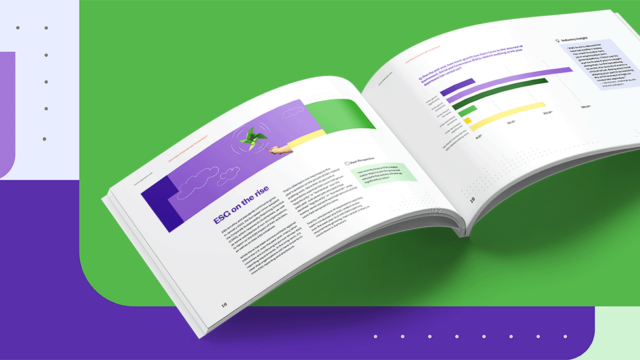
How To Use Audit Data Analytics for Internal Audit
Take a deeper look at how data analytics assists with internal audits.
Data analytics is the process of assessing data to find trends, patterns or other insights.
Organizations in a variety of industries use this process daily. For instance, internal auditors can use data analytics to find and define risks, outliers and anomalies that could reveal deeper problems.
No matter the industry, however, most analysts today rely on software and artificial intelligence to organize large data sets for analysis.
With data analytics software processing huge amounts of data quickly, auditors can work with complete information instead of samples. This added data allows for more complete and accurate assessments of processes and systems. These deeper insights can help inform decision-making that leads to improvements after the internal audit is complete.

Here is a deeper look at how data analytics assists with internal audits.
Understanding data analytics in auditing
Businesses have increasingly complex digitized processes. Data analytics can collect data from these operations and find trends and variances that can help define risks and inefficiencies. It can visualize this information, and auditors can use it to support their findings and suggestions.
The type of data analysis depends on the goal of the internal audit and the needs of the client company. Data analysis falls into four categories:
- Descriptive analysis looks at past and present data. Auditors can use this approach to see what happened in the past and what is currently happening in the company. The analysis seeks to define these events and explain how they happened.
- Diagnostic analysis also looks at historic and current data. It takes analytics a step further by seeking to explain why trends formed or events occurred. These insights are often necessary during internal audits so that decision-makers can define problems requiring solutions.
- Predictive analysis uses historical data to define trends with the assumption that they will continue into the future. Analytics software can also weigh industry trends and economic data to fine-tune predictions and account for more variables to increase accuracy.
- Prescriptive analysis relies on forecasts using mathematical models or data from tests. The insights from this analysis can help predict the best possible solution to an issue or the best strategy for carrying out changes or adopting new strategies.
Auditors may use multiple analytics approaches during their audit to provide the best insights to clients.
Using big data in auditing
More data offers a more complete and accurate picture of a business’s operations. Such results require selecting relevant data from the industry or business operations.
In addition to accuracy, large data sets are also necessary to utilize machine learning (ML) software and other artificial intelligence tools. The more quality data these tools process, the more accurate the analysis or forecasts they produce.
Whether they use ML software or non-AI analytics tools, internal auditors typically seek large data sets to bring these benefits to their clients.
Preparing your organization for audit data analytics
Data analytics can improve internal audits, but only with proper planning. Auditors need to select the correct tools and approach or the analysis will not support their work.
The planning process starts by defining the objective of each audit. Any data analytics used in the process should support this aim. Also, the data should be directly related to the audit’s goals and not contain irrelevant, outdated or skewed information. Poor data could lead to inaccurate insights or make trends difficult to see.
In most cases, auditors will use first-party data that comes directly from company operations or their interactions with customers. Auditors that use second-party data, on the other hand, typically do so when evaluating a specific industry or customer activity from outside sources for predictive or prescriptive analysis.
Creating a data-driven culture
For many companies, the first step in adopting data analytics starts well before the internal audit. Companies can create a data-driven culture that helps employees and decision-makers understand the importance of gathering information to make well-informed decisions.
A data-driven culture will help everyone involved in operations understand the importance of good information. They will seek to preserve data and use it when applicable to inform decisions. This culture is especially vital for internal auditing because auditors often need good data from different departments.
Accessible data analytics platforms on the cloud can foster a data-driven culture by allowing different departments to collaborate and share data in a way that supports overall company performance.
Steps to implement audit data analytics
A methodical approach to planning can lead to the most effective use of data analytics in audits. Analytics is not universally useful, so companies need to select the correct areas to apply the methods.
For internal audits, the team should start by defining aims and problems and then decide if analytics can offer insights that will help reach goals or answer questions. In many instances, companies will define relevant data types and sources and continue to draw information from them to support internal audits on an ongoing basis.
Identifying audit areas for data analytics
Data analytics is useful for specific auditing areas. If used intentionally to address specific questions during the audit, analysis can provide effective insights. However, auditors need to choose the focus areas for their analytics efforts carefully.
Here are some areas where data analytics may be useful:
- It can find patterns or trends in spending or revenue. Insights into these areas can help find issues like unnecessary spending, underexploited revenue streams and inaccurate bookkeeping.
- It can analyze recordkeeping and accounting performance by comparing purchase orders to spending or invoicing.
- It can find anomalies in transactions, spending or accounting. This information can help find fraud or misuse of funds, as well as unintended human error.
No matter the use, though, you should select the right data set first. After defining the area of focus and the questions you need to answer, your data should include information relevant to the specific area. Auditors also have to set parameters, such as the timeframe for the data, sources and other variables affecting quality and relevance.
Choosing the right data analytics tools
Data analytics software should accommodate the needs of auditors. It should also integrate with other auditing software systems so that analysts do not have to transfer findings manually and all team members can have access to the results of the analysis.
Compatibility can be especially important for machine-learning software, which can collect and analyze data on an ongoing basis.
Cloud-based analytics tools make access and collaboration easier because auditors can use them regardless of their location.
Finally, data analytics tools should allow for customizable visualization. Internal auditors can make charts and graphs to explain their findings to company decision-makers. These tools make it easier to communicate findings to people who may not have a technical understanding of the area being audited.
With the right tools, planning and approach, data analytics can streamline the auditing process. It will also help internal auditors to find insights, trends and issues that would have otherwise escaped notice.








